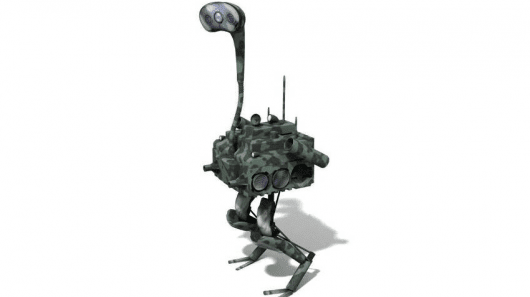FastRunner reach speeds of up to 50 mph (80.4 km/h)
Fast as the FastRunner may become, it will never be able to escape the comparison to an ostrich. One day, thanks to a joint effort by MIT and the Florida Institute of Human and Machine Cognition (IHMC), this bipedal sprinting robot is going to assume its rightful place in the DARPA-funded robotic zoo, right next to the robotic cheetah and the mule-like BigDog. Thanks to an innovative, self-stabilizing leg design, the movements of this flightless robotic bird are going to be not only very efficient, but also extremely fast. The legs are already capable of hitting 27 mph (43.4 km/h), matching the fastest of humans. The researchers hope to see FastRunner reach speeds of up to 50 mph (80.4 km/h). That, plus the ability to negotiate fairly rough, uneven terrain, potentially makes it a force to be reckoned with, on the battlefield and elsewhere.
The project is a tangible sign of how effective future cooperation between MIT and IHMC could become. In the IHMC corner, a team led by Dr. Jerry Pratt is taking care of building and designing FastRunner, while also working on physics-based control algorithms. In the MIT corner, a team led by Professor Russ Tedrake is helping out with high-level design issues and developing control algorithms based on robust nonlinear control approaches (nonlinear control is an area of engineering dealing with control mechanisms for systems where output may not be directly proportional to input).
So, although the future does look bright, FastRunner still needs to run quite a long distance in order to separate theory from practice, and there are several milestones along the way. First, the researchers want to arrive at a simulation that would have FastRunner sprint at 20 mph (32.2 km/h) on a flat surface and do 10 mph (16 km/h) on fairly uneven terrain (the simulation is run on an open-source basis, so if you feel like contributing, go ahead and download it).
Once such a simulation is deemed physically realistic, a real world version of the robotic ostrich is going to be put through its paces. Currently 40 percent of the mechanical design work is complete, and one full-sized leg has been developed through rapid prototyping. The ultra-light leg design has each of the robotic limbs equipped with a singe motor and some energy-conserving springs to relieve the batteries.
Read more . . .
Bookmark this page for “running robot” and check back regularly as these articles update on a very frequent basis. The view is set to “news”. Try clicking on “video” and “2” for more articles.









